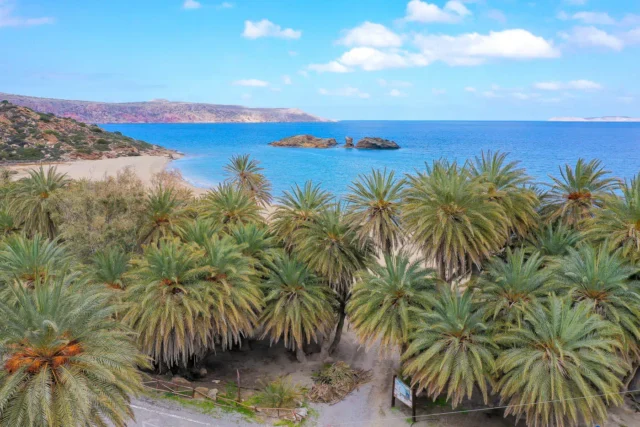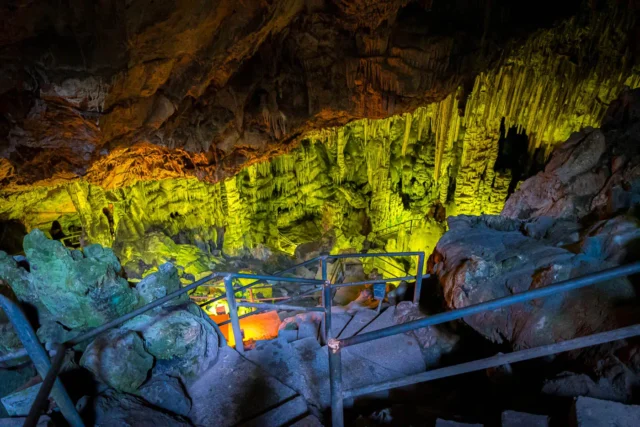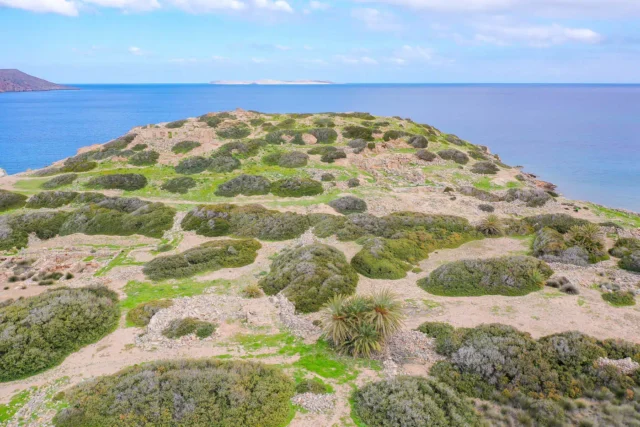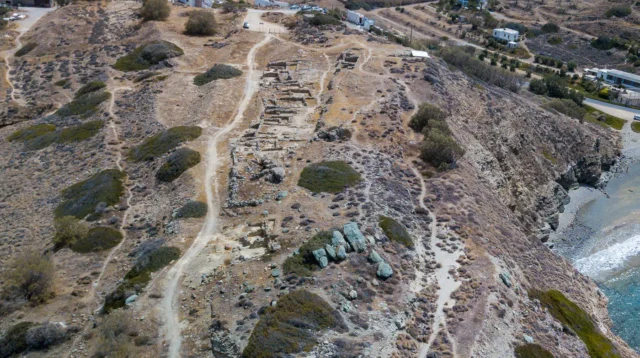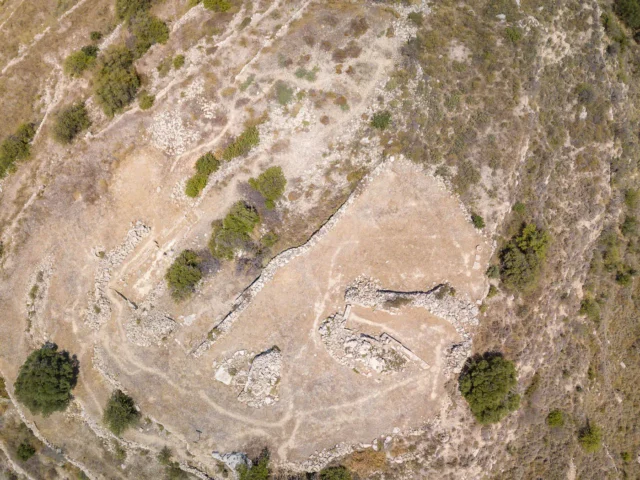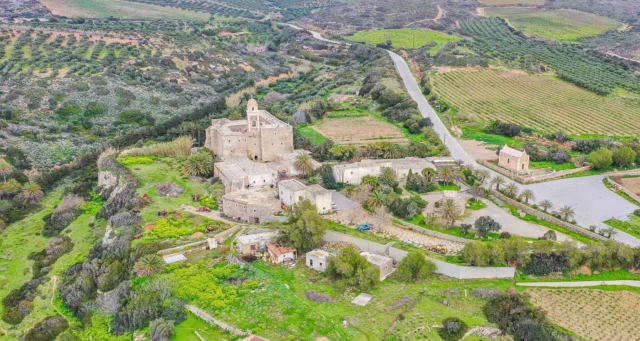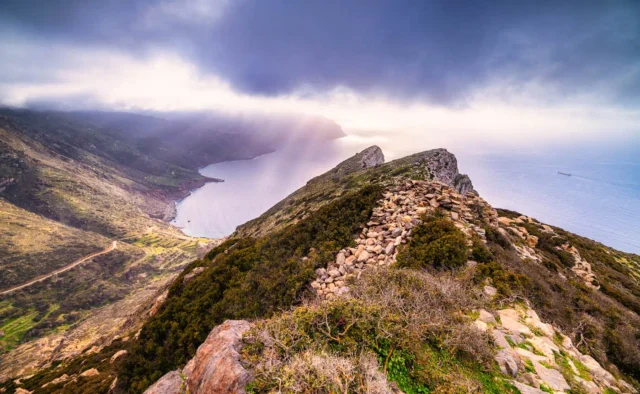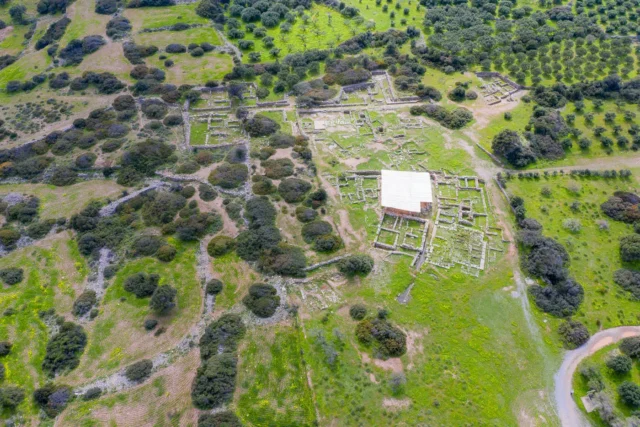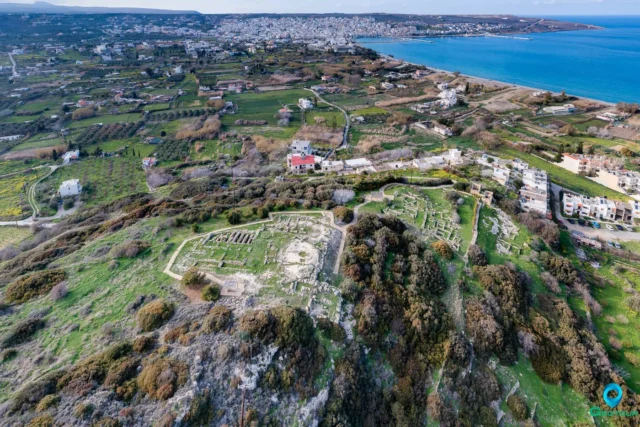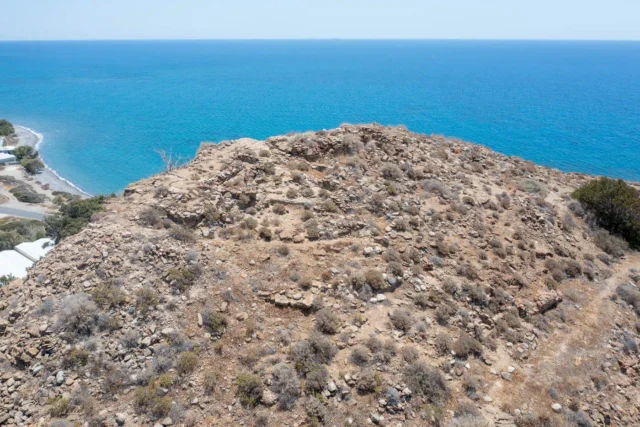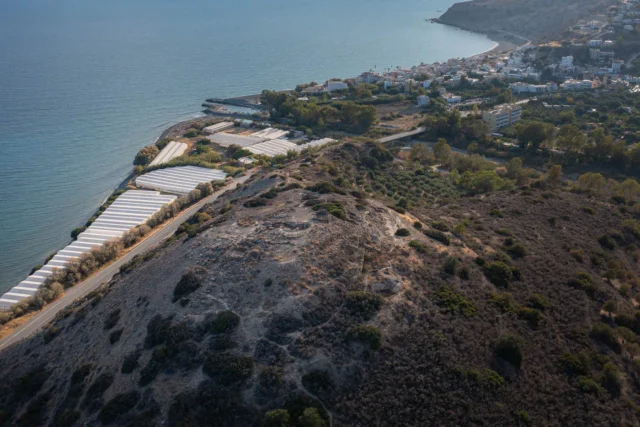135
listings found
Categories
Active filters:
Vai beach
A destination of exceptional natural beauty in the Sitia region, featuring pristine golden sands and crystal-clear turquoise waters. The beach is adjacent to a unique, protected palm forest, the largest of its kind in Europe, composed of thousands of Cretan date palms (Phoenix theophrasti). The surrounding area contains ancient ruins and traditional villages. Just south, a footpath leads to the secluded cove of Psili Ammos, a tranquil beach with fine sand popular with naturists.
Dikteon Antron cave
Dikteon Antron, also known as Psychro Cave, is a site of significant mythological and archaeological importance located on Mount Dikti in Crete.
The cave's history spans from the Neolithic to the Roman period, primarily as a religious site. In Greek mythology, it is renowned as the birthplace of Zeus.
The cave's interior features a wealth of stalactites and stalagmites, as well as a lake. Archaeological excavations have uncovered artifacts from various periods, attesting to its continuous use by humans. Open to the public, visitors can explore the cave's chambers and witness its geological formations.
Ancient Itanos
Ancient Itanos, a prominent harbor city on Crete's northeastern coast, thrived on trade and cultural exchange. Its strategic location in the eastern Mediterranean facilitated its growth and influence over eastern Crete. The city, built across two adjacent hills, likely housed important sanctuaries. The city center, located between these acropoleis, contains partially excavated building remains. Two additional hills mark the northern and southern boundaries of the city, with the northern hill housing the necropolis and the southern hill featuring defensive walls and towers.
Itanos held a unique position among Cretan cities due to its outward-looking nature and focus on trade. The city prospered well into the Roman period, even minting its own coins. The Northern Necropolis served as the main burial ground, with excavations revealing its use from the late Geometric to the late Hellenistic period. Notable artifacts recovered from Itanos include a marble funerary stele depicting a warrior, now housed in the Agios Nikolaos Museum, and an Ionic capital made of ironstone, suggesting the presence of monumental structures.
Chamezi archaeological site
An archaeological site near Sitia in eastern Crete, known for its unique elliptical house from the Middle Minoan IA period. Discovered in 1903 by Stephanos Xanthoudides and later studied by Costis Davaras, the structure was initially thought to be a peak sanctuary but is now considered a domestic dwelling. The site also contains earlier rural farmhouses from the Early Minoan period. Key features include a central courtyard, a possible domestic shrine where figurines were found, and numerous bronze artifacts.
Trypitos Hellenistic settlement
Located on a promontory 1.5km east of modern Sitia, this site was a small, fortified town that flourished during the Hellenistic period (late 3rd to mid-2nd century BC). Possibly the ancient city of Setaia or Heteia, its strategic position offered natural defenses and access to two harbors. Excavations revealed a well-preserved naval shelter (neosoikos), indicating maritime trade. The discovery of coins marked "ΠΟ" suggests it might be Polichna, an autonomous city-state with its own mint. Its relationship with nearby sites like Petras is still researched. The city likely declined after the mid-2nd century BCE, though its later history is uncertain. It remains an active archaeological site under investigation.
Agia Fotia Minoan Tombs
Minoan Tombs at Agia Fotia, Crete Historical Significance Near the modern village of Agia Fotia, on the northeastern coast of Crete, lies an extensive Minoan cemetery dating to the Early […]
Presos (Praisos) ancient settlement
Located in eastern Crete's Siteia peninsula, this significant archaeological site occupies two hills near the Siteia river. It was a major settlement from the Late Minoan through Hellenistic periods, notably associated with the Eteocretans, considered the original Cretans. Evidence dates back to the Neolithic. Key periods include Late Minoan (tombs, refuge settlements), Archaic (city-state formation, Eteocretan inscriptions), Classical (flourishing inland city-state controlling territory), and Hellenistic (destruction by Hierapytna around 140 BCE). The site saw reoccupation in the Middle Byzantine and Venetian periods. Archaeological finds include Eteocretan inscriptions, LM III tombs, Archaic sanctuaries (Altar Hill), architectural remains (houses, possible Andreion), pottery, and pithoi. The distinct Eteocretan language and identity are crucial aspects. The city lacked walls but had a nearby fort. Agriculture and textile production were likely economic activities.
Toplou monastery
Toplou Monastery, on Crete's eastern tip, is a fortified monastery showcasing Byzantine and Venetian architecture. Dating back to the 14th century with 17th-century fortifications, it played a key role in Cretan resistance during Ottoman rule. The monastery features a two-aisled basilica dedicated to the Virgin Mary, housing a remarkable collection of Byzantine icons and frescoes, and a museum with religious artifacts and folk art. Beyond its religious and historical significance, Toplou Monastery is known for its agricultural heritage, producing high-quality organic wine and olive oil. It stands as a cultural landmark, attracting visitors with its history, architecture, and scenic location, while remaining an active monastery and cultural center.
Liopetro Fortress: A Venetian Stronghold Overlooking the Cretan Sea
A Venetian fortification, also known as Leon di Pietra, located on a cliff near Chamezi village in Sitia, Crete. Proposed in 1579 by Proveditor Giacomo Foscarini, it was built in the early 17th century as a refuge for 6,000 Sitia residents against potential Turkish attacks. It never served this purpose, as the population was relocated to Heraklion. The partially ruined structure includes vaulted cisterns, a church of Saint John, and the chapel of Prophet Elias at its summit.
Palaikastro Minoan Settlement (Roussolakkos)
The Minoan settlement of Palaikastro, located near the modern village of Palaikastro on Crete's eastern coast, thrived during the Bronze Age. Occupied from the Early Minoan II to the Late Minoan IIIB periods (c. 2600-1200 BC), the settlement spanned over 50,000 square meters. Palaikastro's strategic location with a sheltered harbor facilitated trade and agriculture. Excavations have revealed a well-planned town with houses, workshops, and evidence of a vibrant social and economic life. The town's layout suggests central planning, with grid-like streets and organized blocks of houses, possibly indicating a clan-based social structure. Palaikastro's economy was based on agriculture, trade, and crafts like weaving, metalworking, and pottery production. Religious practices are evident through artifacts like figurines and incense burners. Ongoing archaeological investigations continue to enrich our understanding of this important Minoan center.
Petras Minoan settlement
Located near Siteia in eastern Crete, this significant Minoan archaeological site shows continuous occupation from Final Neolithic (ca. 4000 BCE) to Byzantine eras. Excavations reveal a small palace, first built in MM IIA, destroyed around 1700 BCE (MM IIB), rebuilt in Neopalatial (MM III-LM IB), and destroyed again in LM IB. Features include a central court, magazines, ashlar masonry, and the best-preserved Minoan hieroglyphic archive. A few Linear A inscriptions were also found. The palace was the center of an urban settlement with houses, evidence of pottery, textile, and purple dye production, and Protopalatial/LM III fortifications. Limited Postpalatial (LM III) reoccupation occurred. The site offers key insights into Minoan regional administration and economy in eastern Crete.
Zakros Minoan Palace
The Minoan Palace of Zakros, situated in eastern Crete, features Neolithic habitation and a significant Late Minoan IB palace. Excavations reveal a Neopalatial settlement, Protopalatial houses, and evidence of post-palatial reoccupation. The palace, with 150 rooms and a central court, highlights Minoan architectural conventions. Discoveries include clay nodules, seal impressions, and elaborate artifacts like the "Bull’s Head Rhyton." The site’s history spans from the Final Neolithic to the Late Minoan IIIB periods, marked by both construction and destruction, potentially by natural disasters. Excavations by Hogarth and Platon uncovered residential and economic zones, a complex street network, and palatial annexes. The site, lacking modern visitor facilities, offers insights into Minoan civilization, with artifacts exhibited in Heraklion, Aghios Nikolaos, and Siteia museums.
Katharo plateau
Situated in the Dikti mountain range of Lasithi, Crete, 26km from Agios Nikolaos, this plateau rests at 1150m altitude. Its waters flow via the Havgas Gorge to the Lasithi Plateau. Human activity dates back to the Minoan era. Ownership was historically disputed between Lasithi and Kritsa residents, eventually awarded to Kritsa after legal battles documented in Greek and Turkish archives; a legend involves a Turkish judge and the site "Kadi's Pit". Today, it's primarily used for cultivating potatoes, apples, and vineyards by Kritsa residents who lease the land. Access is via paved road from Kritsa through an oak forest, or dirt roads from Lasithi Plateau and Malles Ierapetras; the E4 trail also passes through. Points of interest include the Avdeliakos settlement, the Chapel of Afentis Christos, and Kadi's Pit. The area offers cool summer temperatures, hiking opportunities, and hosts the annual Shepherd's Festival after August 15th.
Fournou Koryfi
Fournou Korifi, an Early Minoan settlement near Myrtos village in Crete, dating back to the mid-3rd millennium BCE, provides valuable insights into the Minoan civilization. The settlement, with approximately 90 rooms during its peak, features the "Myrtos Goddess" figurine and evidence of workshops and diverse economic activities. Archaeologists, including Peter Warren, have studied the site's social structures, with interpretations ranging from communal living to a more complex hierarchy. The South House offers a glimpse into domestic life with its weaving room and kitchen. Fournou Korifi's well-preserved remains contribute to our understanding of Early Minoan architecture, social organization, and daily life.
Myrtos archaeological site
The Myrtos-Pyrgos archaeological site, also known as Pyrgos, is a significant Minoan Bronze Age settlement located on the southern coast of Crete, near Ierapetra. Occupied from the Early Minoan II to the Late Minoan IB period, it provides valuable insights into the development of the Minoan civilization. The site's strategic location and long occupation history make it a key resource for understanding the social, economic, and political dynamics of this ancient society. Excavations have revealed a variety of artifacts, including seals, seal impressions, Linear A tablets, and inscriptions on clay vessels, shedding light on the evolution of communication, administrative practices, and trade networks in Minoan Crete. The site's chronological phases, from Pyrgos I to Pyrgos IV, show a growing cultural sophistication and connections with other parts of Crete, including Malia and Knossos. The final phase, Pyrgos IV, ended with a catastrophic fire that destroyed much of the settlement, marking the end of its prominence.









